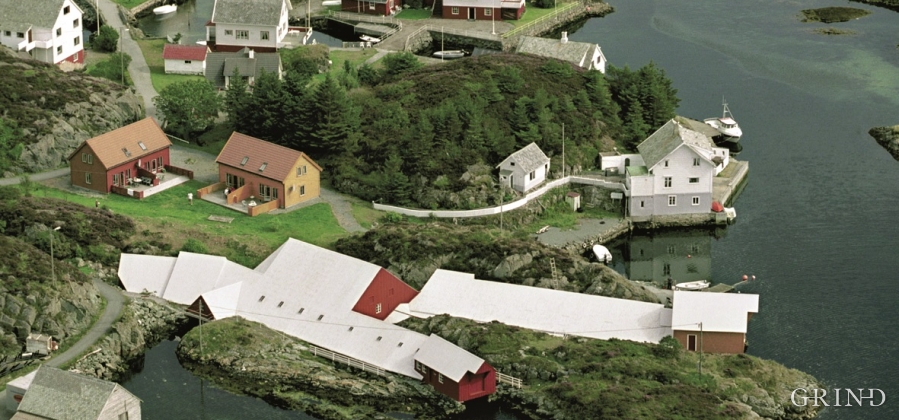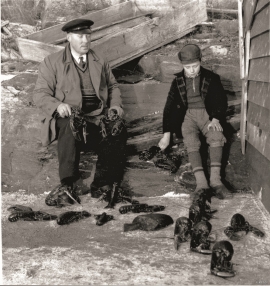Published: 21.07.2015 | Author: Stein Byrkjeland, William Helland-Hansen
The lobster park in Espevær. (Helge Sunde)
The first Lobster Park in Espevær was built in 1887, and at the most there were three here. Operations ceased in 1957. The one lobster park that remains (picture) has been restored and is well worth a visit. The restorations were awarded an EU prize for Cultural Heritage, from Europa Nostra.
Lobster fishing has been a small, but stable industry on the southwest coast of Norway since the 1600s. In the 1800s, the English came with their fish-carrier boats to buy lobster from the west coast of Norway. The shellfish has given good earnings, despite long-standing concerns about over-harvesting. Previously, there were more lobster parks along the coast than there are today. They were built in order to take care of the living lobsters until the time of year when the demand and price were highest. On Kvitsøy, Sotra and Askøy Islands and in Fitjar, the parks were operating more recently, and a few of them are still in operation. Lobsters are vulnerable to changes in temperature, so the most advanced parks were built under roofs in order to maintain a reasonably even temperature of about +15 °C.
Lobster is more and more seldom fare. Over-harvesting for many years has caused a decline in the populations to a low level. In 2004 it was forbidden in Hordaland to catch lobster that were less than 25 cm in length. A lobster of that size is probably about 8-10 years old. In Hordaland the hunting season is limited to the months of October, November and December.




